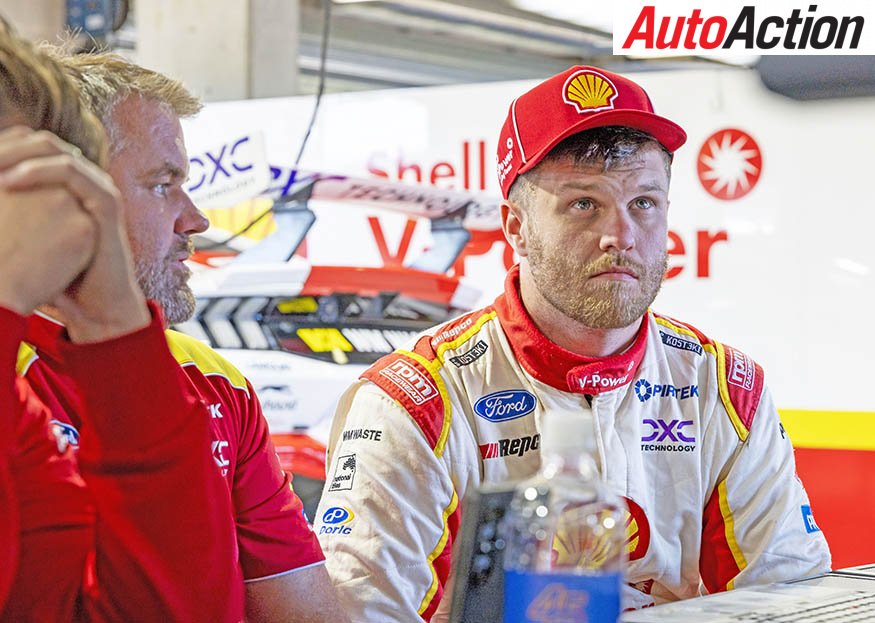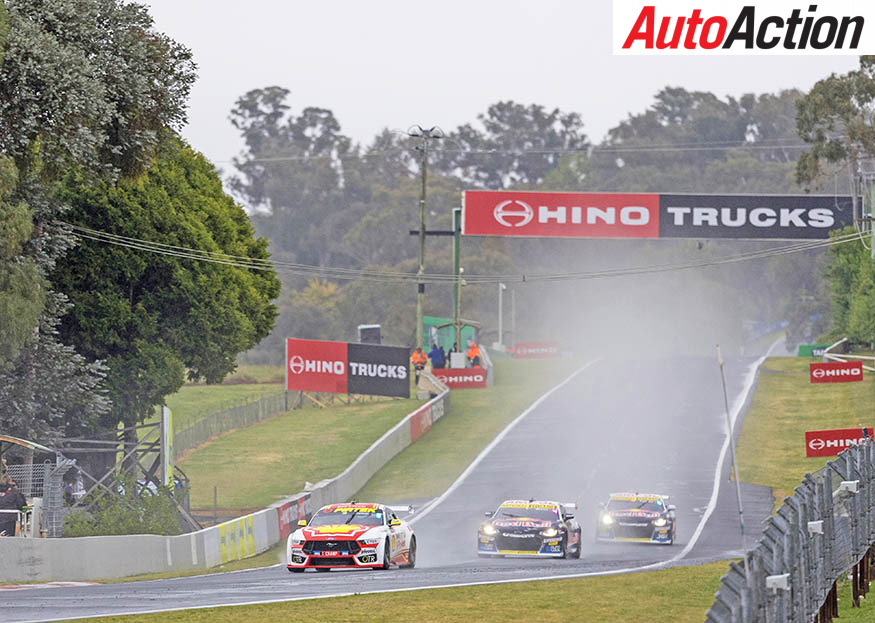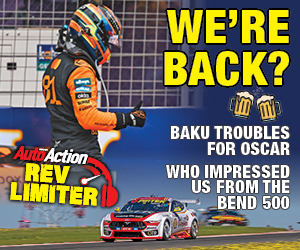Flashpoint Bathurst: The Parity Wars Continue

Two years ago, we thought the hostility around parity was at its peak. We may have been wrong. Andrew Clarke looks at the politics of the 2025 Bathurst 1000.
Parity is the topic everyone wants to argue about, yet almost no one wants to discuss it with nuance on the record. So, let us cut to the chase and stick to the facts rather than fiction.
Fact, Dick Johnson Racing, as the Homologation Team for Ford, was upset with a process it felt was failing the Fords in the field. It aired its thoughts, got hosed down and then got even crankier, landing a Hail Mary protest against Supercars, the custodian of the process that allows changes. It was a long shot fired after days of frustration, targeted at what it believed was a failure of process.
DJR said Supercars’ data showed a 10hp Chevrolet edge above 5,900 rpm at Bathurst-like pressure, with Ford stronger lower in the curve, although top speed is dictated by high-rev performance. DJR believed the supplied data was irrefutable.
What remains to be discussed is the process of change and whether 10 horsepower would make a significant difference, considering the 1% tolerance for engines during initial build and dyno testing. We are led to believe that a Bathurst-winning engine in the Gen3 era was 9hp down on the best engines, which says something.
From there, two threads become intertwined, the immediate concern of parity, are the makes equal under the rules, and the potential longer-term need for some form of Balance of Performance-BOP, would you artificially equalise beyond the base regulations. They are not the same thing, even if the paddock chat keeps mashing them together.
First, the uncomfortable truth. Was Ford at a disadvantage in 2023 and 2024. Yes. Absolutely. That is not a conspiracy; it is the record.
Is Ford still disadvantaged in 2025. Maybe, but it is murkier and less clear. Some weekends, yes. Others, maybe not.
At the higher altitudes of Mount Panorama the power curves slip, and Ford and DJR argued that Fords were at a disadvantage. But sympathy was thin when Fords kept topping the times and claimed pole, with top speeds down Conrod Straight that were better than the Chevrolets on key runs.
Two years ago, Triple Eight, which oversaw the Chevrolet homologation, argued the Ford teams just needed to do a better job. Maybe DJR did just that at Bathurst when it dominated the early days with speed.

The Brodie Kostecki/Todd Hazelwood Mustang leads a pair of Red Bull Racing Camaros down Conrod Straight, which is where Dick Johnson Racing said the Mustangs were at the biggest disadvantage. Image: Peter Norton
Kostecki’s top-speed Argument
While many were whispering off the record, reigning Bathurst champ Brodie Kostecki put his view plainly. He did not win many friends by arguing a speed deficit while sitting as fastest qualifier and pole winner, but he said it is easy to say when it is the truth.
“I am not too sure. We need to get our upgrade to fix the deficit to the Camaros,” he said after topping qualifying when asked if he could win the race. “They are two kays an hour on average faster and it is a bit disappointing that nothing has been done about it after a report has been published. Our report has been published, and it is just crap,” he said, presumably referring to the response by officials rather than the report itself.
On television, after qualifying, Mark Larkham referenced data showing that Kostecki had a higher top speed than Broc Feeney, and Kostecki was visibly agitated and stuck to his line. Take the data as fact, but also understand that at lower revs the Chevy was behind, which complicates simple straight-line narratives.
Not everyone associated with the blue oval agrees with DJR’s stance.
One senior figure told us there is no current parity issue, full stop, while acknowledging the past deficit was real and required work to close. In their words, the difference now is largely ‘setup, not rulebook.’
There are a dozen legal ways to cull your own top speed without the rulebook’s help, drag from cooling targets, ride height creep, rear toe choices that help tyre life but tax Conrod.
Some of what is being shouted as parity may be set up, or sporting rather than technical disparity.
DJR outlined its claims in a particularly harsh statement after its protest was dismissed.
“Despite making the same power at sea level, at 92 kPa barometric pressure, Bathurst conditions, the GM engine produces up to an additional 10 horsepower over the Ford engine above 5,900 rpm, where the engine operates for 94 per cent of a lap of Mount Panorama at full throttle.”
So, what DJR was essentially saying is that at pretty much every track on the calendar but Bathurst, 688 to 862 metres above sea level, and Taupo, 360 metres above sea level, there is parity. But at those two tracks, they do not believe there is parity.
Inside the Chevrolet camp, you also hear a blunter refrain: “Ford didn’t do a good enough job, and now they want everyone else to fix it.” While harsh, it is a view with traction in more than one garage.
On the flip side, Ford voices say Chevrolet benefits from a development runway that smoothed its rough edges quickly, and that in many cases Ford needed to match Chevy on both engine and aero, and not the other way around, so the GM camp has always had it easier.

The Jack Le Brocq/Jarrod Hughes Camaro at speed… was it faster in a straight line than a Mustang? Image: Peter Norton
Now, to the Balance of Performance and rumours of a Chevrolet threat to walk away if introduced. It seems that was little more than a veiled pressure play that outlined the view of some in the Bow Tie camp.
It would take something truly seismic to drive GM out of Supercars. Money is invested, branding is embedded, and the category needs both brands to be healthy. Threats make headlines, they rarely make policy. Forget what you might think, Chevrolet is committed to racing in Australia and will remain. Balance of Performance is not the ditch for it to die in.
All of this is being argued with a third elephant quietly edging into the room, Toyota’s arrival. The category is determined not to repeat another Volvo moment where a newcomer detonates the balance and politics for a season or more. That means any parity architecture built now has to accommodate a third platform without endless mid-season changes.
If you are wondering why officials are conservative with changes, that is a big part of it. The system must scale and operate with controls to prevent rorting. Wind tunnels and transient dynos will finalise the make-specific Vehicle Specification Documents and Engine Specification Documents, making subsequent changes difficult.
There are procedural grenades within the rules regarding the approval of car changes, and this is the real sticking point for DJR and the reason for the protest.
Effectively, your competitors must approve changes that may not be in their best interest, and DJR claims the process is unfair. Those approval rules and other timelines exist to prevent knee-jerk adjustments every time a sector offends a team principal.
Chevrolet crews point out they played ball at The Bend when a short-notice tweak was allowed for the ‘good of the show.’ DJR, for its part, argues that if the regulations contain a mechanism to correct an imbalance, Supercars should be able to use it when needed. But the TRC doesn’t allow that… enter the lawyers.
Ultimately, Motorsport Australia dismissed the protest, ruling it was a contractual matter under the Teams Racing Charter rather than a sporting issue. What DJR wanted was the rules governing fairness in the sporting competition to overrule the TRC, and that is a big step.
The protest argued for prompt correction of the disparity to protect competitive integrity without a vote of teams with vested interests.
The middle ground will continue to be defined by the Teams Racing Charter. DJR’s request for Supercars to act at short notice on hard data would require either a change to the Charter or a reinterpretation of the authority to act in the interests of fairness.
That is the core of what went down at Bathurst. It also may not be finished yet. We will have more in Auto Action Premium Magazine.
See Auto Action Digital.






